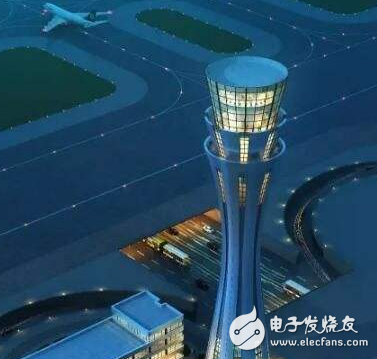For a long time, the flight control tower has been the symbolic structure of the airport, responsible for commanding the takeoff and landing of the aircraft. However, advanced visual technology may allow the tower to enter history, replaced by a photographic monitor that provides a clearer picture of the controller without being affected by low visibility and dim light. According to reports, Searidge Technologies of Canada introduced a state-of-the-art flight control product that replaces the viewing windows of traditional towers with virtual images based on Augmented Reality (AR) technology, providing panoramic views of the airport runway and vehicles moving through the terminals. You can even see the hot air balloon in the distance.

Neil Bowles, head of air traffic management at Searidge, who has served as a tower controller, said that controllers often need to look down and look for information, rather than looking at the window, so how to effectively integrate and use all kinds of information around them becomes a Business. Bowles pointed out that this technology can superimpose graphical information on the screen, such as marking the aircraft's call sign, altitude and speed, so that the control personnel can quickly identify it, and the terminal building also displays the gate with a virtual label. The number is convenient for the staff to refer to.
These cameras, which can move up and down and zoom in and out, replace the telescopes used in traditional towers, providing clearer images, night vision and thermal sensing, allowing regulators to be in dimly lit and poor visibility. Can see and remove existing visual dead ends. In addition, you can set up a dedicated camera to monitor hotspots, which is where security risks can arise. The future flight control room no longer needs to be located at the tower or even the airport. For example, the London City Airport, which plans to introduce a virtual tower in 2019, will be operated by the control personnel at an air traffic control center 130 kilometers away from the airport. The product used in this project comes from the Swedish manufacturer Saab, a competitor to Searidge.
The digital tower eliminates the cost of building and maintaining traditional control towers and offers a cheaper option to introduce air traffic control services to airports that do not currently have tower services. Searidge emphasizes that digital towers are still being controlled by regulators, and virtual images are an add-on tool that helps regulators make the right decisions. In the event of a camera failure, other cameras can complement the viewing angle. If all machines fail and the controller does not see any virtual images, then the measures with low visibility are used, and radar and radio communication are used to safely evacuate traffic.
Searidge is now supported by two flight control operators, Nav Canada and NATS. The digital tower system designed by the Budapest Airport in Hungary in November 2017 is expected to be put into service in 2018. Singapore Changi Airport also announced This technology will be tried.
Absolute rotary Encoder measure actual position by generating unique digital codes or bits (instead of pulses) that represent the encoder`s actual position. Single turn absolute encoders output codes that are repeated every full revolution and do not output data to indicate how many revolutions have been made. Multi-turn absolute encoders output a unique code for each shaft position through every rotation, up to 4096 revolutions. Unlike incremental encoders, absolute encoders will retain correct position even if power fails without homing at startup.
Absolute Encoder,Through Hollow Encoder,Absolute Encoder 13 Bit,14 Bit Optical Rotary Encoder
Jilin Lander Intelligent Technology Co., Ltd , https://www.jilinlandermotor.com
